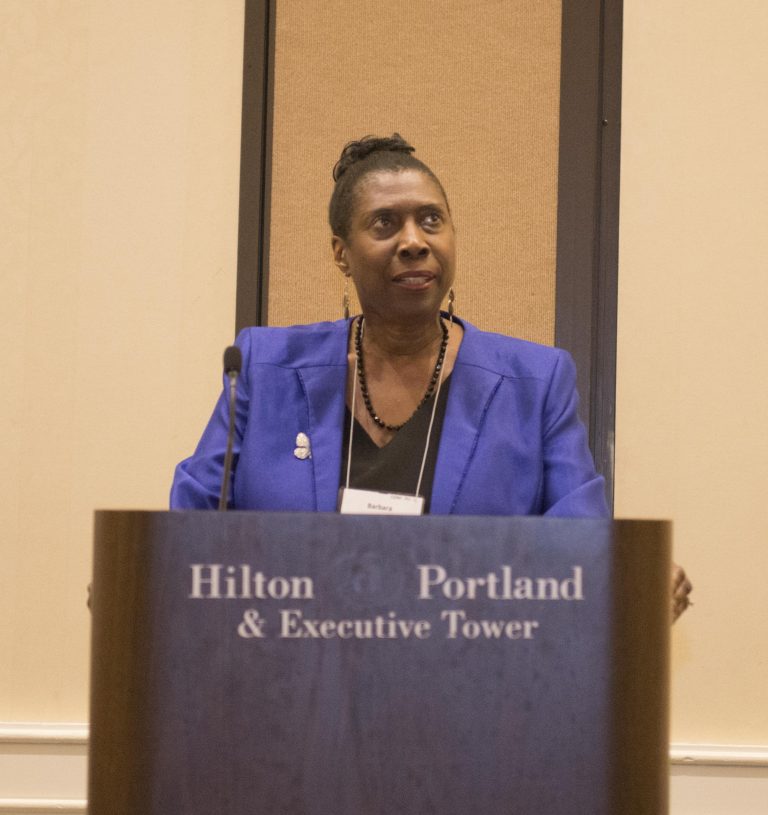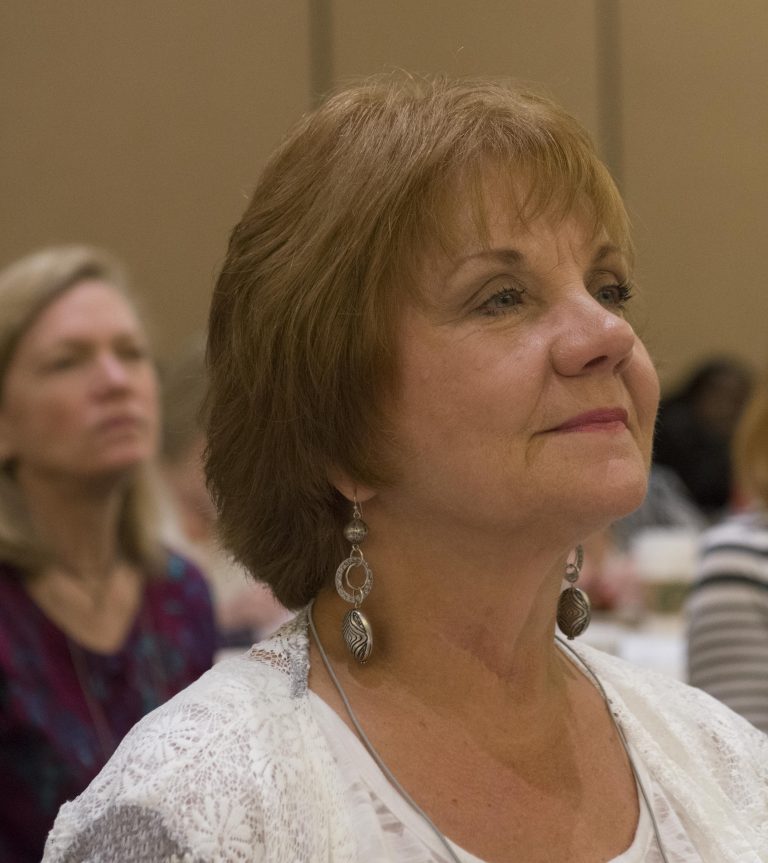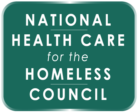Menu: HCH | A Vision of Health for All – Pages
Health Care for the Homeless: A Vision of Health for All
Part One: Vision and Values
Senator Edward M. Kennedy wrote these words 30 years ago in the Preface to James D. Wright and Eleanor Weber’s Homelessness and Health, the first official report on research findings from the Robert Wood Johnson Foundation and Pew Memorial Trust-funded national Health Care for the Homeless demonstration program.[2]
From the beginning of the Health Care for the Homeless (HCH) movement in the U.S., the overall vision has been to provide compassionate and quality primary health care to people experiencing homelessness.
From its beginnings as a foundation-funded demonstration program, HCH has been distinguished from many other homeless programs by its balanced commitments to direct service, policy advocacy, consumer involvement, and ending homelessness. The key questions posed to the presenters and participants of this section of the HCH Pioneers Session were: How was this balance established and maintained? What was the original vision for the work, and were the values applied throughout the projects?
The National Health Care for the Homeless program is often referred to as the HCH movement. When asked about this terminology, John Lozier, replied: “Movement is an admittedly nebulous term, often not subject to clear definition. In our case, I’d say we are a contributing part of a social movement toward health equity, away from historic health care injustice, toward a rights-based framework for the financing and delivery of health care that includes attention to the social determinants of health.” (Personal communication, July 11, 2016)
The HCH movement is situated within larger national efforts to provide accessible, affordable, and quality community-based primary health care to people. Many of these earlier models of community-based care were founded by public health nurses, such as Lillian Wald, who in 1893 began providing outreach nursing services to impoverished immigrants in New York City’s Lower East Side.[3] Wald’s work grew into the Henry Street Settlement House and the Visiting Nurse Service of New York City.
In 1925, nurse midwife Mary Breckinridge established another pioneering model of community-based care, the Frontier Nursing Service in rural Appalachia, in which outreach nurses provided obstetric, primary care, and health education to impoverished and geographically isolated women and families.[4] Both of these nurse-led, community-based health programs used the model of nurses providing the primary health care, with physicians reserved for follow-up services on a referral basis. As physician and health policy experts Thomas S. Bodenheimer and Kevin Grumbach state, “Both the urban and rural models of community health centers waned during the middle years of this century.
Public health nursing declined in prestige as hospitals became the center of activity for nursing education and practice. A team model of nurses working in collaboration with physicians withered under a system of hierarchical professional roles.”[5]
Bodenheimer and Grumbach point out that “the community health center model was revived in 1965, when the federal Office of Economic Opportunity, the agency created to implement the ‘War on Poverty,’ initiated its program of community health centers.
The program’s goals included the combining of comprehensive medical care and public health to improve the health status of defined low-income communities, the building of multidisciplinary teams to provide health services, and participation in the governance of the health centers by community members.”[6]
The first two community health centers to be funded were located in a public housing project in Boston and in an impoverished, rural African-American community in the Mississippi Delta. Both sought to combine clinical health care services with public health outreach and advocacy services to support the social determinants of health, including affordable housing, safe drinking water (in the rural area), and community gardens.
They trained and supported community residents to become outreach workers. As research and demonstration programs, they were able to show a reduction of hospitalization and emergency department use, and improved community health status in the populations they served.[7] As physician-founder of the community health centers H. Jack Geiger states:
Based on broad bipartisan support of the CHC model as an essential component of the U.S. safety-net health care system, the federal government has invested in a new period of expansion of community health centers. These health centers are critical access points for the health care system reforms enacted in the Affordable Care Act of 2010. As of the most recently available data (2015), there are more than 1,370 health centers in the U.S. serving over 24 million people.[9]
Also stemming from the 1960s civil rights and counter-culture movements, came the development of grassroots community Free Clinics, such as the Haight-Asbury Clinic in San Francisco which opened in the summer of 1967. As physician-founder of this clinic David E. Smith and his colleagues write in a 1971 “manual” of Free Clinic medical care:
They go on to point out that the Free Clinics which opened in cities around the U.S. in the 1960s and 1970s, were largely anti-establishment, volunteer-run, and consumer-driven. “The word ‘free’ is meant to mean more than no charge per patient visit. It also means no red tape about forms or papers … The term ‘free’ also means ‘free’ of conventional labeling and value systems.”[11]
Many Free Clinics from this time period either closed or merged with existing CHCs, but others—including the Haight-Ashbury Free Clinic in San Francisco and the Fan Free Clinic in Richmond, Virginia, are still in operation. Faith-based Free Clinics also exist as part of the safety-net health care system. These clinics have a focus on “poverty medicine,” and they tend to be concentrated in the Southern Bible Belt region.[12]
There have also been Free Clinics and outreach health care service programs associated with academic medical centers; these are typically university-sponsored or student-run clinics in impoverished urban areas.[13]
It is within this health care and societal context that the HCH movement developed in the mid-1980s, in response to the health needs of the burgeoning number of visibly homeless “street people” throughout the country. Much has been written on what has come to be termed the phenomenon of “new homelessness,” characterized by the rapid increase in numbers and visibility of people on the city streets, and the changing demographics of people we have come to call “homeless.”[14],[15]
As anthropologist Kim Hopper writes in his book Reckoning With Homelessness, “By the end of the 1970s, increasingly frequent public outcry, press coverage, and a growing advocacy movement signaled that homelessness was an urgent issue demanding attention and redress.”[16]
Hopper, along with urban studies researchers at MIT Donald Schön and Martin Rein have pointed out, “homeless” was a convenient umbrella term to describe a range of people experiencing the extremes of disaffiliation and ruptured social ties. In an important policy frame analysis case study of Massachusetts in the 1980s, Schön and Rein observe that, “The very naming of the phenomenon of homelessness reflected a political struggle … The scandal of homelessness looked as though it could harness a new politics of compassion and shame—compassion for the plight of the dispossessed and shame at the inhumanity of national and local policies toward them. Homelessness, in sum, had political appeal.”[17]
In December 1983, the Robert Wood Johnson Foundation and the Pew Charitable Trusts, with the support of the U.S. Conference of Mayors, announced a joint $25 million five-year program to fund a new initiative, the Health Care for the Homeless Program. Dr. Philip Brickner, Chair of the Department of Community Medicine at St. Vincent’s Hospital in New York City, was chosen to direct the program on behalf of the foundations. Through a competitive process, 19 initial demonstration projects across the U.S. were funded.[18],[19]
Based on the experiences of St. Vincent’s hospital, in 1985 Dr. Brickner published a manual “to serve as a guide for physicians, nurses, social workers, shelter staff members, and program managers who work with the homeless.”[20]
This manual included chapters on clinical care topics such as chronic disease management, infectious disease management, approaches to the treatment of both mental health and alcoholism, team-based care, and ways to help patients without homes access Medicaid, Medicare, and public assistance benefits. It also included a chapter, “Working with Hospitals,” which included a description of early hospital discharge planning for patients without homes, as well as the establishment of alternatives to hospital, stays through what came to be termed medical respite care.

For this section of the HCH Pioneers session, two nurses from the original RWJ/Pew HCH demonstration program spoke of their experiences. Barbara Conanan, currently program director of the NYU Lutheran Family Health Centers, spoke of the early roots of the St. Vincent’s Hospital and Medical Center, Department of Community Medicine-affiliated clinic in a men’s shelter in the Bowery where several St Vincent’s Hospital physicians worked in a “clinic (that) was really barbed wire.” St Vincent’s had operated such health programs specifically for the homeless since 1969: Dr. Brickner was the lead author of a 1972 Annals of Internal Medicine article about this clinic titled “A Clinic for Male Derelicts in a Welfare Hotel Project.”[21]
Barbara Conanan had been working at the same men’s shelter with Project Renewal, a substance abuse program, and she stated, “I witnessed that care. Meeting people where they’re at.” She started working with Dr. Brickner at St Vincent’s Hospital in August 1981, and in 1983 Dr. Brickner asked her to become the manager of the outreach shelter. Then “RWJ showed up” to observe how they did their HCH program. “We were figuring it out as we went along. Just do it and if it doesn’t work one way, try it a different way.”
The 50 most populous U.S. cities were eligible to apply for demonstration program grants. Out of those, 45 were selected for visits by RWJ teams consisting of a physician/nurse/social worker and a RWJ foundation person. They used the teamwork model from St Vincent’s Hospital. They aimed for continuity—so that the same teams would try to visit the same cities over the four years of the demonstration program—so that they could see the evolution of the projects. Barbara developed relationships with people at these sites over those years while the RWJ people focused on evaluating specifics of the different demonstration programs.
Conanan stated that she had recently found and re-read a case study of the RWJF and the beginning of HCH. “They said they wanted to:
- Demonstrate new ways to deliver health care and social services to homeless people,
- Develop better ways to link people with public benefits, and
- Encourage community agencies and organizations to work together to solve problems. “In parentheses, they added ‘of homeless.’ I found it interesting that they didn’t say ‘end homelessness’ but rather ‘to solve the problems of homelessness.’”
She went on to say, “The vehicle for this was to create coalitions—coalitions as the driving force for how services were going to be provided in that locality. What was emphasized was that each area had its own politics, its own way of delivering services, and therefore each city should make that decision on their own.
They also said this would be an opportunity for learning that could lead to action. That was interesting and surprised me: they said ‘making a difference for homeless people they serve.’ That was something that touched my heartstrings. One other driving force was that each program had to find a way to sustain themselves within two years.”

The other speaker in this section of the HCH Pioneers session was Sharon Brammer, a nurse practitioner from Birmingham, Alabama.
We were the smallest of the original 19 RWJ HCH demonstration sites. We had six employees. … We came. We met. Not a one of us in that room knew what to do. We didn’t even know how to begin. We didn’t know how to run a clinic. Then I thought: maybe it would be a smart idea to ask a homeless person what worked. I took a stethoscope and a blood pressure cuff and went out into the parks and asked the consumers, “What would work for you?”
What kind of access would help you get access to care? They said, “Well, you’ve gotta come when we’re here, when the shelters close in the morning.” So we started doing clinics at 5:30 in the morning. “We have to eat, so you can come at the soup kitchen time.” So we would have clinic at the soup kitchen, and then in the afternoon when they came to get a bed.
The bottom line was to find what worked for them, because obviously something had not been working. We had clinics in shelters, then a mobile health unit. We found we needed a central clinic. It grew from there. Really, the only thing the grant asked us to do was to demonstrate new ways to deliver health care and social services to the homeless people. Demonstrate better ways to link services and people together and to link community services.
But it did not give us a manual of how to do it. At that time there was no Council (NHCHC). There were none of the wonderful publications that we have now and that those 400 new people (the number of first-time attendees at the 2016 conference) can have access to now. That’s how we evolved over the 30 years. … It still bothers me that 30 years later I still have a job. I’m really sorry about that.
John Lozier adds, “The way I recall it being expressed was that they simply wanted to demonstrate that ‘homeless people’ could be effectively engaged in care, contrary to the prevailing opinion.” This is echoed in Wright and Weber’s research report on the RWJ-Pew HCH demonstration program:
Indeed, by the end of the RWJ-Pew-funded HCH demonstration program, close to 100,000 clients without homes were seen in HCH clinics for a total of 300,000 visits.[24]
[1] James D. Wright and Eleanor Weber, Homelessness and Health (Mcgraw-Hill, 1988). pp. vii-viii.
[3] Lillian D. Wald, Lillian D. Wald, Progressive Activist (New York: Feminist Press at the City University of New York, 1989).
[4] Thomas Bodenheimer and Kevin Grumbach, “Understanding Health Policy: A Clinical Approach, 6e | AccessPharmacy | McGraw-Hill Medical,” 2012, http://accesspharmacy.mhmedical.com.offcampus.lib.washington.edu/book.aspx?bookid=394.
[7] H. Jack Geiger, “The First Community Health Centers: A Model of Enduring Value,” Journal of Ambulatory Care Management Community Health Centers 28, no. 4 (December 2005): 313–20.
[9] NACHC, “Research and Data,” NACHC, accessed August 27, 2016, http://nachc.org/research-and-data/.
[10] David E. Smith et al., The Free Clinic: A Community Approach to Health Care and Drug Abuse., ed. David E. Smith (Beloit, Wis, Stash Press, 1971). p. x.
[12] Gregory Weiss, Grassroots Medicine: The Story of America’s Free Health Clinics (Lanham, Md.: Rowman & Littlefield Publishers, 2006).
[13] Smith et al., The Free Clinic.
[14] Peter H. Rossi, “The Old Homeless and the New Homelessness in Historical Perspective.,” American Psychologist 45, no. 8 (1991): 954–59.
[15] Barrett A. Lee, Kimberly A. Tyler, and James D. Wright, “The New Homelessness Revisited,” Annual Review of Sociology 36 (2010): 501–21, doi:10.1146/annurev-soc-070308-115940.
[16] Kim Hopper, Reckoning with Homelessness, Anthropology of Contemporary Issues (Ithaca, NY: Cornell University Press, 2003). p. 61.
[17] Donald A. Schön, Frame Reflection: Toward the Resolution of Intractable Policy Controversies (New York: Basic Books, 1994). pp. 132-133.
[18] Philip Brickner et al., “Under the Safety Net | W. W. Norton & Company,” 1990, http://books.wwnorton.com/books/Under-the-Safety-Net/.
[19] Joel L. Fleishman, Casebook for the Foundation: A Great American Secret, 1st ed. (New York, NY: Public Affairs, 2007).
[20] Philip W. Brickner et al., eds., Health Care of Homeless People (New York, NY: Springer Publishing Company, 1985). p. xi.
[21] Philip W. Brickner et al., “A Clinic for Male Derelicts in a Welfare Hotel Project,” Annals of Internal Medicine 77, no. 4 (October 1, 1972): 565–69, doi:10.7326/0003-4819-77-4-565.
[22] Fleishman, Casebook for the Foundation.
[23] James D. Wright, Homelessness and Health (Washington, D.C.: McGraw-Hill’s Healthcare Information Center, 1987).
[24] Philip W. Brickner et al., Under the Safety Net: The Health and Social Welfare of the Homeless in the United States (New York, NY: W. W. Norton & Company, 1990).

